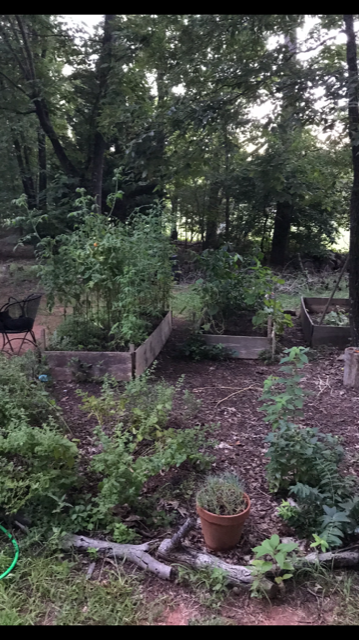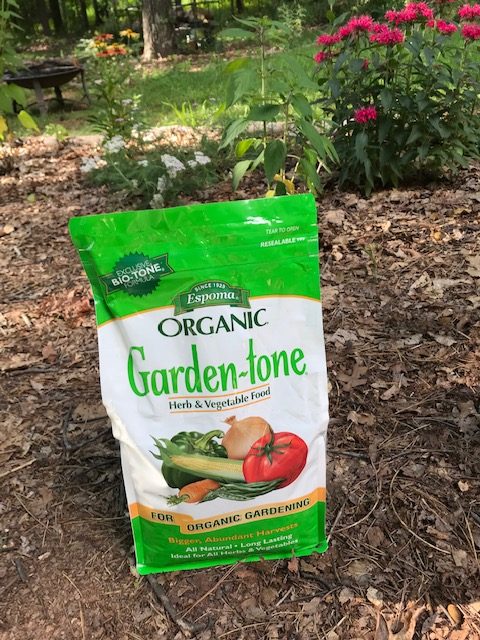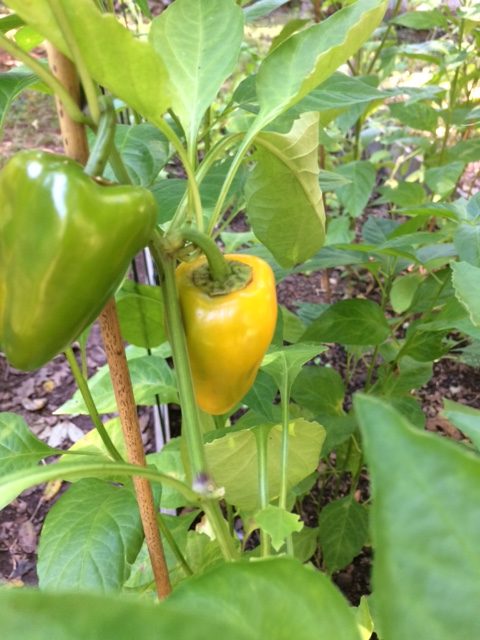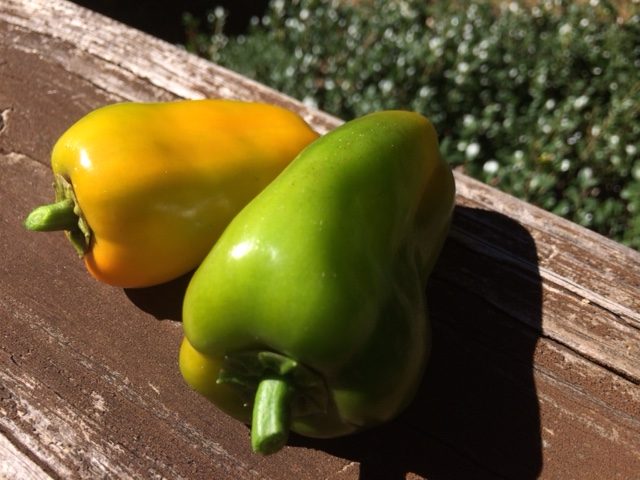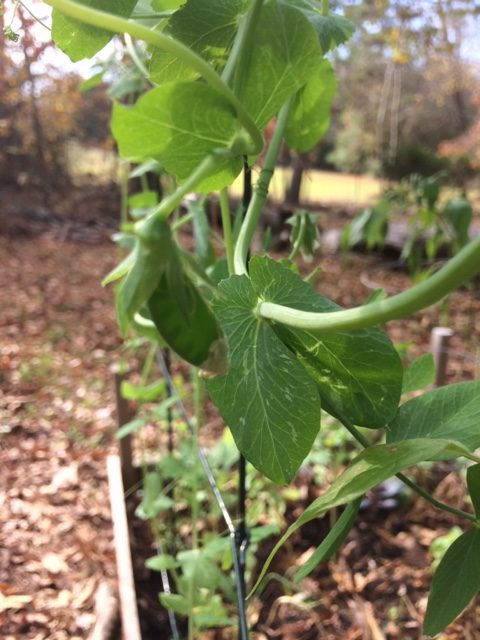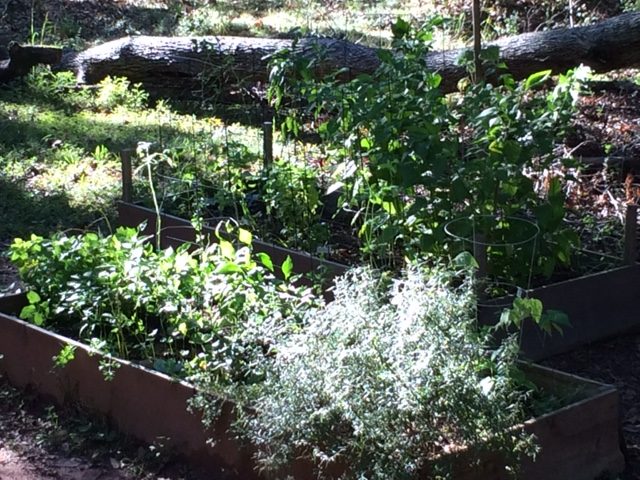This is a very short 5 minute presentation I gave when I interviewed for my former job at University of Georgia Extension in 2022. I believe Regenerative Gardening & Farming is the best way to protect and improve soil health, enhance environmental health , combat climate crisis, and improve our local, regional, and global food systems.
Veggies Fall 2023
I started 25 trays of seeds this year! I love seeds, and my favorite place to order organic seeds is Lake Valley Seed. Almost all the plants I grew this year I grew from seed.
I planted Broccoli, Cauliflower, Kale, Cabbages, Collards, Celery & Brussels Sprouts from seed in Espoma seed starting mix, and then transplanted them into my homemade compost & soil mix, with Espoma Plant Tone mixed in. I have ten beds total, and filled three of them with these plants spacing them 12-16 inches apart. I also add a couple trowel scoops of the compost/manure mix into the holes when I plant.





It rained torrentially for about two weeks in September. Everything I had already planted was pulverized from days and days of heavy rain, but luckily I had started lots of plants from seed & so I had extras to fill in. By then, it was a tad late for fall planting (first week of October). Update post soon with new photos of the plants. Organic is a bit slower, better for the environment, & tastier too! Harvesting Collards today!




Seed Starting Fall 2021
I tried several different methods of seed starting over the last 8 years, before I settled on this one. Good seeds plus good seed mix means you can’t go wrong, unless slugs are involved.
My best choice ever (seed startingwise) was to try a new product from my favorite organic fertilizer company, Espoma.
Their Espoma Seed Starting Mix is part of what made this my best garden year ever! Another part was the superior seeds I purchased from Baker Creek Heirloom Seeds.
I had some old container trays that I recycled & brought home from Cofer’s when I worked there last year. They have drainage holes and are perfect for starting seeds, but any container with drainage holes can be used.
I transplanted from the seed trays into recycled 4 pack trays on Sept 4th. I mix 1/2 organic mushroom compost, 1/2 organic topsoil, & add Espoma Plant Tone. Mix these together well, and transplant seedlings. They stay in that soil mix until they are ready for transplanting into the raised beds.
I started the first round of seeds in mid August, but had a slugtastrope & had to plant more seeds. I now move the baby seedling trays onto the deck at night to avoid slugs. This fall, I planted Broccoli, Kale, Cabbage, Brussels Sprouts, Collards & Cauliflower in seed trays.
Some types of veggie seeds achieve best results by direct sowing them into the place they will grow until harvest. This past week, I direct sowed carrots & radishes.
New posts coming soon about the expanded garden bed construction, summer harvests & more fall planting details. These babies are almost ready to go into the ground! I will likely plant them around end of September.
Happy Gardening!
5 Veggies for Raised Beds and Hot Summers
The growing season here in Georgia is super long & hot for summer veggies. April through October yields lots of produce.
Few memories of mine are more pleasant than those of my childhood in the garden with Dad – salt shaker in hand. We would spend hours out there. Fresh, homegrown, heirloom tomato plucked off the vine, and then devoured with a sprinkle of salt is as good as it gets.
In small spaces, I have grown some fantastic produce. I’d like to share 5 of my favorites discovered over the past seven years, chosen for best growth in small spaces, tastiness of produce, and quantity of yields.
#1. Tomato- top two varieties
Best Cherry Tomato Award goes to
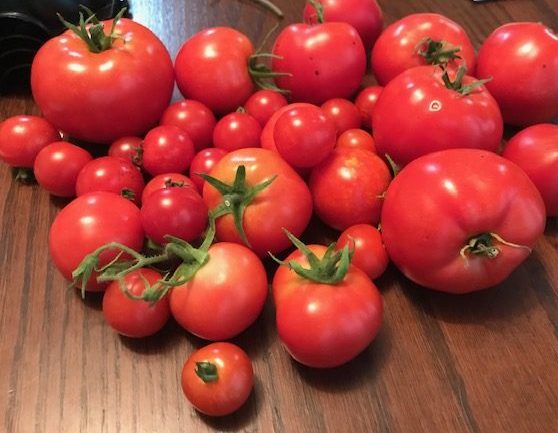
These indeterminate plants are super sturdy and aptly named as “husky.” They are tall, strong vines that need minimal support, and just keep producing the most delicious little 1 inch delights. I am instantly transported back to being a kid in the garden, with all the possibilities of the world ahead of me when I eat a fresh , homegrown tomato plucked from the vine.
While I don’t have the huge, in ground gardens Dad & Mom always made, I do have nine , 4′ x 8 raised wooden beds, a collection of containers, and a small patch of sunshine that the mighty oaks & hickories don’t shade out completely. I get 5-8 hours of sun per day in most of my beds, so they might produce better if I had more sun!
Best sandwich slicing Tomato award goes to
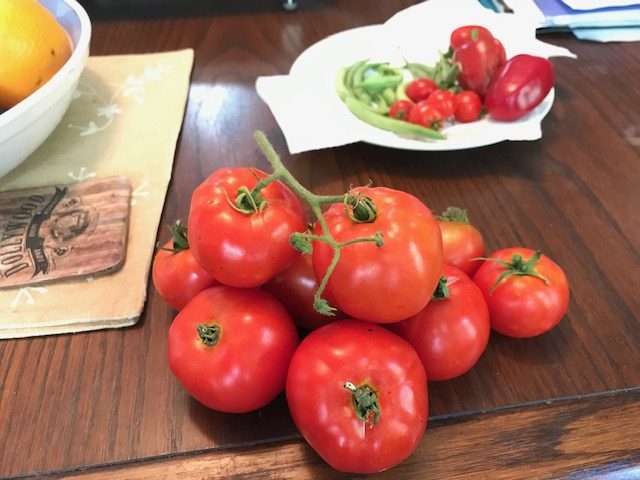
Parks Whopper Improved, Rutgers, & Husky Cherry Red Toms 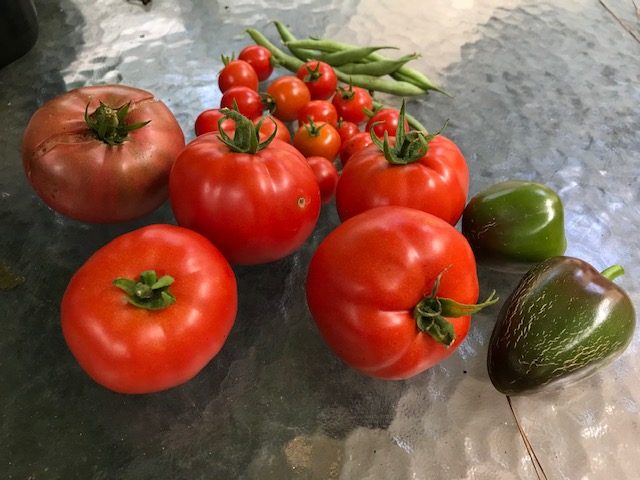
First Harvest 2020 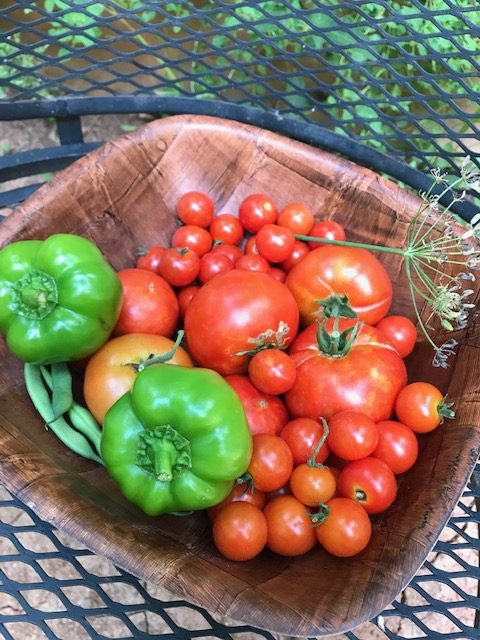
late July Harvest
#2 . Peppers Please!

Chili Pie Pepper
All American Selection Chili Pie Pepper is a fabulous slightly hot, mini bell shaped pepper that reddens as it ages. These plants produce loads of peppers. They need a bit of support as they spread a little wide. There are somewhat shorter plants however and are well suited to raised beds.
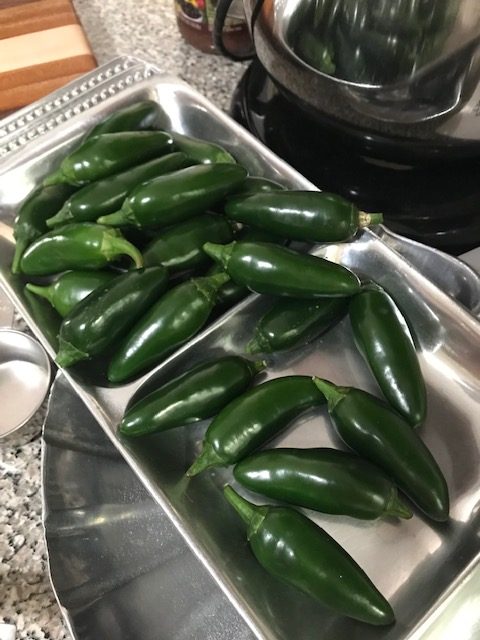
More Jalapenos for poppers 

Look at al those Jalapenos!
I could go on for hours about my love of Jalapenos. But, I already have many times on this blog before. So, I will just say they are tall and beautiful plants that produce an incredible amount of peppers in one season. A Bonnie Plants 6 pack grown in my raised beds in about 10 square feet of bed produced over 200 peppers last year!
#3. Herbs
My two favorite herbs
Annual-Basil

Genovese Basil 
Basil Babies Pinch those blooms 
Keep Harvesting for better plants 
2020 Cinnamon Basil, Blue Lake Beans, Lola Peppers
Oregano
Perennial Oregano is a fantastic drying herb, and gives lots of leaves for many years from one plant.

I dry oregano every year and we use it so many things we cook. I bought one plant 7 years ago when I first began blogging and raised bed gardening. I harvest it and prune it back in the early spring before new growth. It is beautiful and very good for you. Oregano has been used for many thousands of years to enhance flavor and is touted for its herbal medicinal qualities as well.
#4. Beautiful Beans -Two Varieties
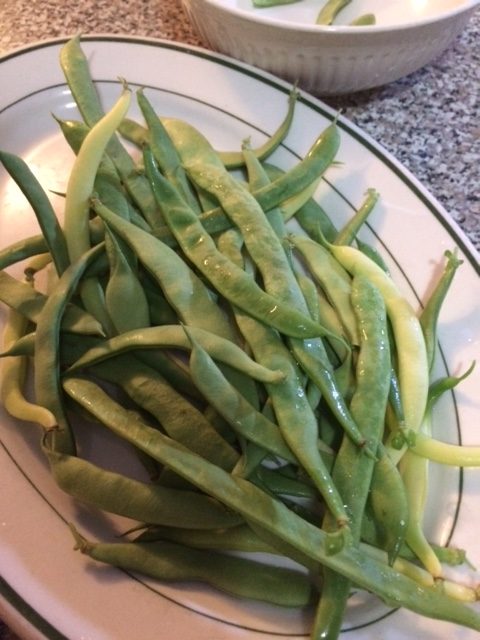
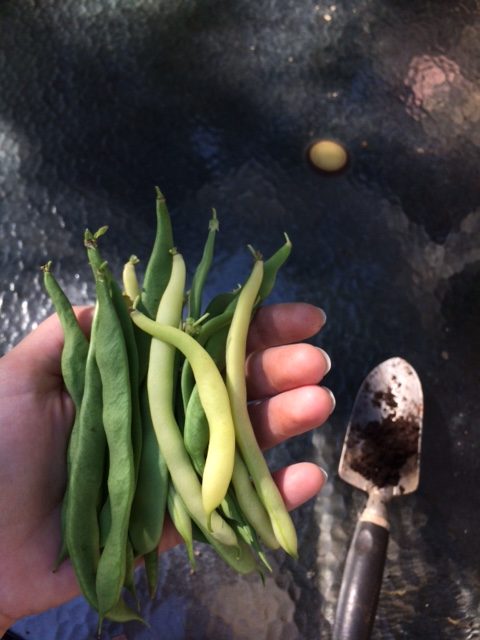
Kentucky Wonder, Cherokee Wax Beans 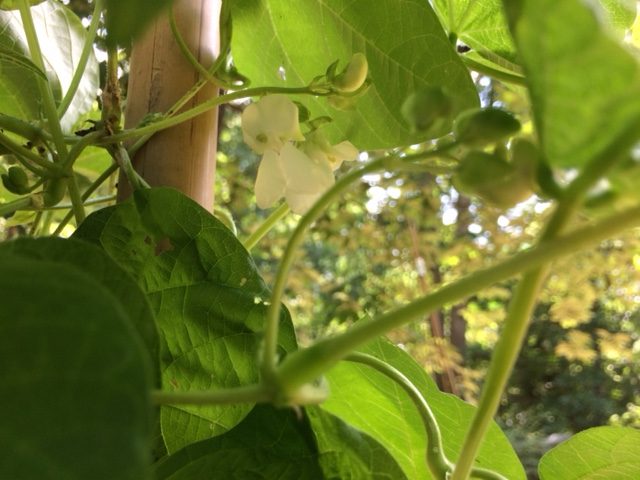
Bean Blossom 
Boil 10 mins, then saute with olive oil, sesame seeds, and salt & pepper. Yum.
Pole Bean Kentucky Wonder
was my Dads favorite and also one of mine. Check out this UGA publication on best home garden green beans for Georgia.
#5. Crunchy Cucumber
is a fantastic pickling cucumber. Vines are very productive, with delicious firm cucumbers.
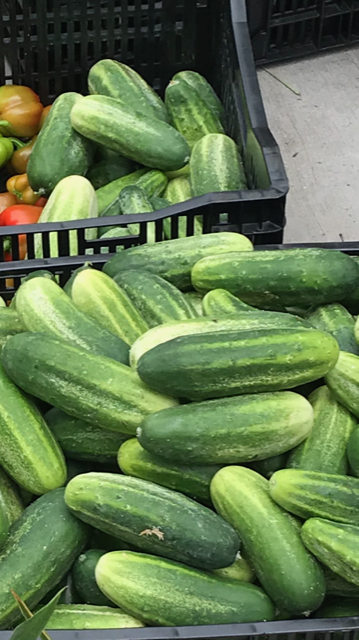
Arkansas Little Leaf Cucumber 
Homemade pickles made from Arkansas Little Leaf Cucumbers
Quick Link to my Best Raised Bed Construction post & Also to Espoma Fertilizer -my favorite fertilizer.
Ga Native: Woodland Sunflower
It took a good bit of searching online to finally identify this particular sunflower growing under one of my huge white oaks as, Woodland Sunflower or ‘Helianthus Divaricatus’. I knew it was some type of sunflower or aster, but wasn’t sure exactly which. I was able to identify it thanks to the multi branching blooms, the size of the plant, the appearance of the blooms and leaves, and photos of different varieties online at the USDA’s plant ID website.
This plant has a spreading habitat, and fills the shady area under the great oak. It does get some afternoon sun here, and the plant seems happy to take over the whole area. The long lasting summer blooms make the lackluster foliage as it dies back bearable. This sunshine yellow perennial returns early every year, and since it grows about 2-3 feet tall it makes a great plant for height at the back of a shady bed or border.
I saw many of these native Woodland Sunflowers while visiting the mountains at Black Rock Mountain State Park, in Mountain City, GA. I will write more about that amazing adventure in an upcoming post. I visited 10 state parks in Georgia in 2018, and am working on articles about hikes at those parks, and the plants I found along the way.
GA Native: Dwarf Crested Iris ‘Iris Cristata’
This native Iris, Iris cristata came from the Night Song Native Plant Nursery plant sale. I thought it died last summer, but it came back early this Spring and bloomed two times!
I placed the rhizome on top of a ridge of dirt at the front of the bulb bed, sandwiched between the huge 2-3 foot tall bearded Irises. The Iris cristata is super tiny, at about 6-10 inches tall.
The Georgia Native Plant Society is a great resource for information on Georgia’s native plants.
I have a few new posts in the works about the new raised garden beds, and all the plants and herbs I am growing this year.
Lobelia Cardinalis, GA native
Let’s start off the New Year with a remembrance of the brilliant red fireworks of summer’s celebratory blooms. This stunning (and aptly named) Lobelia Cardinalis was a super special find from the Nightsong Native Plant Nursery sale last spring. Most of the pics are from blooming time which was mid August to nearly October.
Blooms just kept opening, marching up the ever growing stalk. I waited a while to transplant into the ground. I brought it home at the end of April, and planted in ground in mid July. Seemed to be growing nicely in the pot , so I waited. I dug a hole a bit deeper and wider than the current container, added some organic compost from my Earth Machine composter, and soil from my organic raised beds to fill the hole. Plentiful watering required during the super drought we had this summer and fall.
The mantis reminded me that there is an entire forest ecosystem at work right here in my own backyard garden. The link above takes you to an amazing paper prepared by Rachel G. Schneider about Georgia’s Forest Ecosystems. The mantis, butterfly, bee, and hummingbird love this plant; so do I, and even the cats (due to increased bird and butterfly activity).
It grew to over 3 feet tall, and I was awed and impressed by this amazing plant. This native to Georgia wildflower grows so well here, and I am thrilled to have in my backyard just under the overhanging shade of the oaks and hickories. It gets mostly full sun, with a touch of late afternoon shade in the worst heat of the summer sun. On some of the blazing hot days, it looked a little wilted in the direct sun, but quickly recovered.
This plant became the center of a flourishing ecosystem, in one season. I’m writing an article about the Tallassee Forest (my extended backyard). This area was sacred & special to the Native Americans, and has an interesting history. Many native plant and animal species thrive here – some only here. I’m so fortunate and excited to be able to experience this great state of Georgia, and to write about the native plants and ecosystems in my area!
GA Native Oakleaf Hydrangea, ‘Hydrangea Quercifolia’
I found this Georgia native plant at the Night Song Native Plant Nursery plant sale. This is the second year I’ve gone to the plant sale/open house/farmer’s market in Cherokee County, Georgia.
I finally put the Oakleaf Hydrangea in the ground a few weeks ago. This post focuses on the challenges and triumphs of the process-including finding the right location, extreme summer drought and heat, and a little history of the plant.
I have written about William Bartram in previous posts, like my Finding Buffalo Creek project. He was the first to “discover”, and write about the Hydrangea Quercifolia (and many other native plants), in the 1700’s. I also wrote previously about another of the Bartram plants I brought home last year, one of them is known as the Ben Franklin Tree, aka ‘Franklinia Altamaha’.
The Official Site of the Bartram Trail Conference Library page provides further reading links on John and William Bartram. I also consulted the Georgia Native Plant Society.

I am excited to see what happens with this beautiful native plant. Fingers crossed the deer don’t find it there, and that it makes it through the winter into next season. Maybe it will bloom next year. Also, I think the leaves should change from green to red this fall-which hasn’t happened yet. Looking forward to changes, and new growth in the future!
How to Grow Veggies & Herbs in Raised Beds
I planted only two raised beds this year due to time constraints. Some of the pics are from April at planting time, and I am including new pictures from the end of June to show how much growth has happened over the last month and half.
Repair and planting of the beds April 20th 2019
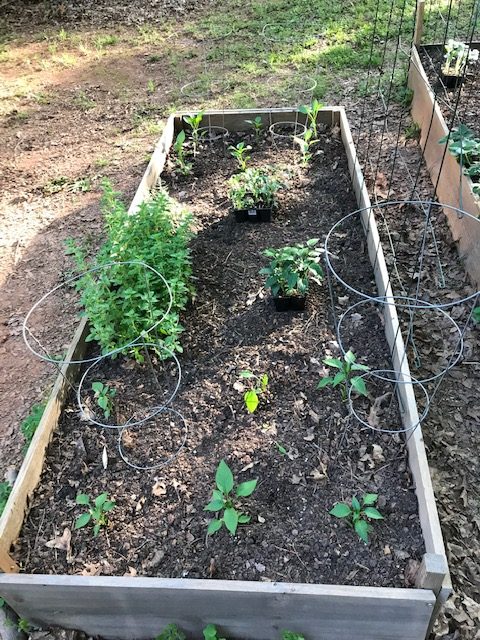
Mid April Planting 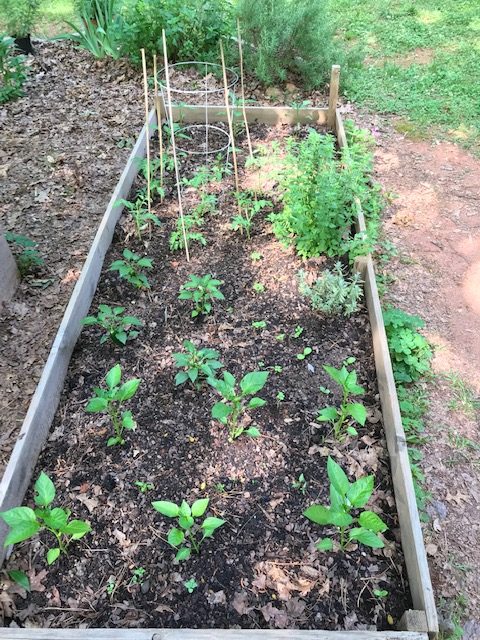
Jalafuego, Jalapeno,Homestead Toms, Basil, Lavender, Bell Pepper 
Bed 2 Planting in April 
Early to Mid May 
some growth 
The first funny harvest, but lots more to come
I planted some Bonnie plants from six packs along with some seeds that I bought, or already had. Bed #1 has Bonnie Jalapeno, Bonnie Homestead Toms, and Bonnie Yellow Bell Peppers. See links to those three below. I also planted for the first time Jalafuego plants from Papa Joe’s Naturally Grown line from Sunbelt Greenhouses in Douglas, GA.
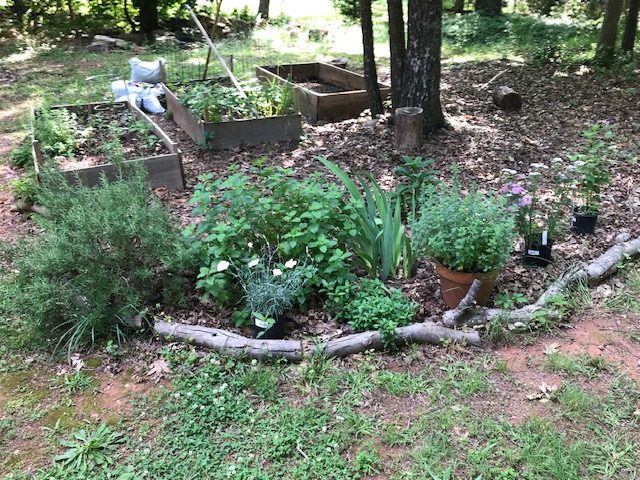
In ground herb garden in May, lots of progress since then. 
Bed two is coming along in May. Needs fertilizer tho. 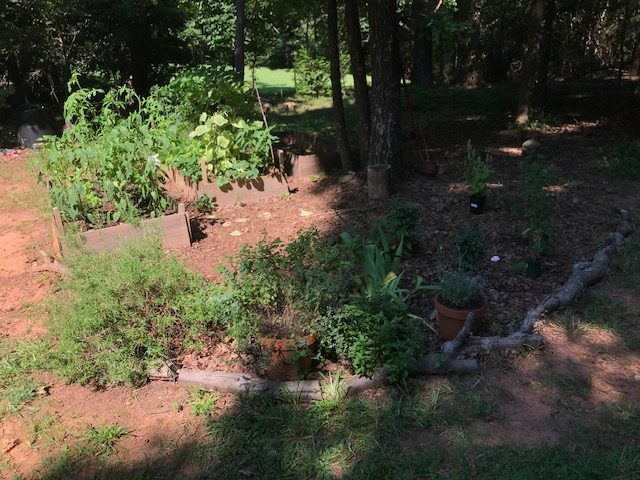

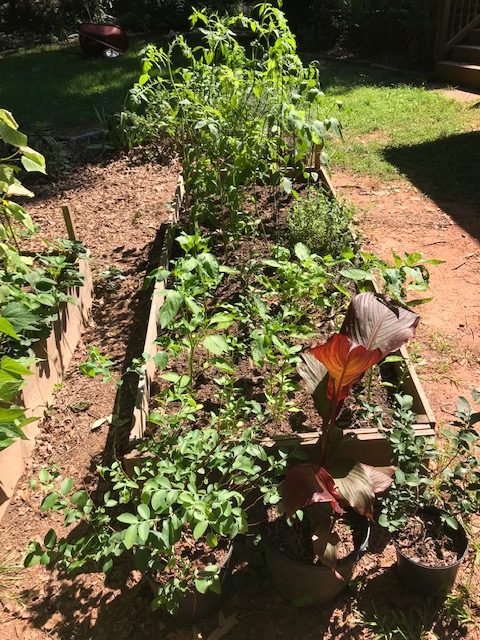
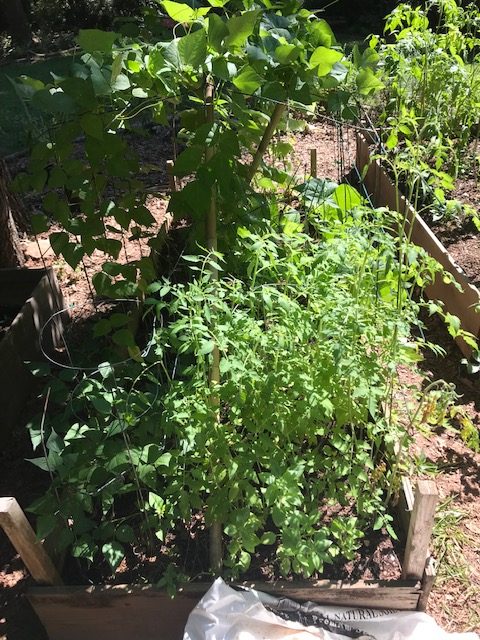

I did a soil test and realized I was totally nitrogen deficient in the beds. I fertilized with an Organic fertilizer from Espoma called PlantTone about a week ago, and am seeing very good results. Updates to follow soon.
Next post will be about planting my Dad’s Memorial Garden in North Carolina.
Oct-Dec & still gardening! Peppers & Peas Please
It was warmer than usual, longer than usual in fall of 2017. I harvested peppers and peas until Dec. 8th. It was a great garden year, and it was fun trying new seeds and plants for the first time. New garden beds, seeds, plants, and new adventures to follow for 2018!
Peppers everywhere this year! I grew Tabasco peppers and Early Jalapenos from seed, from Lake Valley Seed Company. The Tabascos took a long time, but we had many, many Jalapenos all year long!
I harvested green bells, orange baby bells, and absolutely no Poblanos. The Poblano bloomed many times, but no peppers.
My first time growing peas, and I planted late Sept/early Oct. It was hot all fall, so they had trouble getting started, but continued to produce peas until December.
I grew two varieties of Burpee brand peas from seed for the first time- Sugar Daddy and Super Sugar Snap. I learned about the types of peas, Snap vs. Garden. With Garden Peas, the peas inside the pod are the edible part, and you discard the pod. Snap Peas have tender, edible pods. The peas are tiny and tender, and you eat the whole thing pod and all!
I have a small, metal frame greenhouse on the porch for the first time this winter. I put plants from the raised beds in the greenhouse before the first frost, and everything is still alive. My next post will be about the greenhouse, and the new seeds I’m planting for my 2018 garden!








